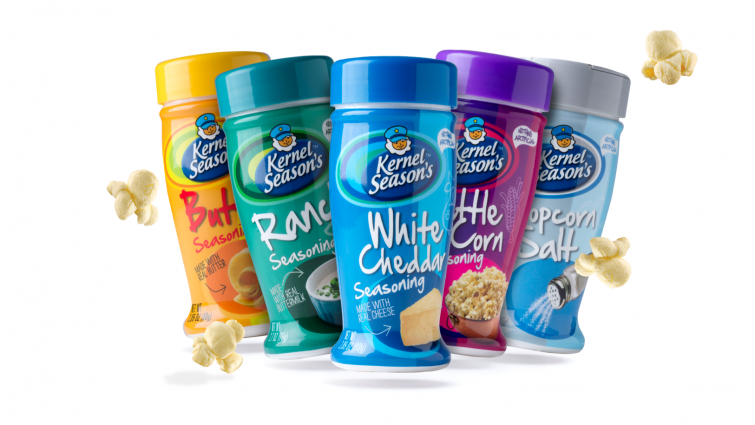History of Popcorn:
-
Popcorn was very popular from the 1890s until the Great Depression. Street vendors used to follow crowds around, pushing steam or gas-powered poppers through fairs, parks and expositions.
-
During the Depression, popcorn at 5 or 10 cents a bag was one of the few luxuries down-and-out families could afford. While other businesses failed, the popcorn business thrived. An Oklahoma banker who went broke when his bank failed bought a popcorn machine and started a business in a small store near a theater. After a couple years, his popcorn business made enough money to buy back three of the farms he’d lost.
-
During World War II, sugar was sent overseas for U.S. troops, which meant there wasn’t much sugar left in the States to make candy. Thanks to this unusual situation, Americans ate three times as much popcorn as usual.
-
Popcorn went into a slump during the early 1950s, when television became popular. Attendance at movie theaters dropped and, with it, popcorn consumption. When the public began eating popcorn at home, the new relationship between television and popcorn led to a resurge in popularity.
-
Microwave popcorn — the very first use of microwave heating in the 1940s — has already accounted for $240 million in annual U.S. popcorn sales in the 1990s.
-
Americans today consume 16 billion quarts of popped popcorn each year. The average American eats about 51 quarts.
Fun Popcorn Facts:
-
Americans consume some 16 billion quarts of this whole grain, good-for-you treat. That’s 51 quarts per man, woman, and child.
- Compared to most snack foods, popcorn is low in calories. Air-popped popcorn has only 31 calories per cup. Oil-popped is only 55 per cup.
- Popcorn is a type of maize (or corn), a member of the grass family, and is scientifically known as Zea mays everta.
- Of the 6 types of maize/corn—pod, sweet, flour, dent, flint, and popcorn—only popcorn pops.
- Popcorn is a whole grain. It is made up of three components: the germ, endosperm, and pericarp (also know as the hull).
- Popcorn needs between 13.5-14% moisture to pop.
- Popcorn differs from other types of maize/corn in that is has a thicker pericarp/hull. The hull allows pressure from the heated water to build and eventually bursts open. The inside starch becomes gelatinous while being heated; when the hull bursts, the gelatinized starch spills out and cools, giving it its familiar popcorn shape.
- Most U.S. popcorn is grown in the Midwest, primarily in Indiana, Nebraska, Ohio, Illinois, Iowa, Kentucky and Missouri.
- Many people believe the acres of corn they see in the Midwest during growing season could be picked and eaten for dinner, or dried and popped. In fact, those acres are typically field corn, which is used largely for livestock feed, and differs from both sweet corn and popcorn.
- The peak period for popcorn sales for home consumption is in the fall.
- Most popcorn comes in two basic shapes when it’s popped: snowflake and mushroom. Snowflake is used in movie theaters and ballparks because it looks and pops bigger. Mushroom is used for candy confections because it doesn’t crumble.
- Popping popcorn is one of the number one uses for microwave ovens. Most microwave ovens have a “popcorn” control button.
- “Popability” is popcorn lingo that refers to the percentage of kernels that pop.
- There is no such thing as “hull-less” popcorn. All popcorn needs a hull in order to pop. Some varieties of popcorn have been bred so the hull shatters upon popping, making it appear to be hull-less.
- How high popcorn kernels can pop? Up to 3 feet in the air.
- The world’s largest popcorn ball was created by volunteers in Sac City, Iowa in February, 2009. It weighed 5,000 lbs., stood over 8 ft. tall, and measured 28.8 ft. in circumference.
-
If you made a trail of popcorn from New York City to Los Angeles, you would need more than 352,028,160 popped kernels!
Since 2000, Kernel Season’s has been America’s #1 Popcorn Seasoning
The line of shake-on toppings adds a burst of exciting flavor to one of America’s favorite, good-for-you snack foods
Kernel Season’s is available in over 25,000 movie theaters and more than 30,000retail stores nationwide
The product line includes:
o Kernel Season’s Popcorn Seasonings
o Kernel Season’s Popping Corn
o Kernel Season’s Popcorn Spritzer
o Kernel Season’s Movie Theatre Butter Popping and Topping Oil
Kernel Season’s Popcorn Seasonings:
Kernel Season’s Popcorn Seasonings are available in twelve deliciously,
all natural and healthy flavors:o White Cheddar
o Nacho Cheddar
o Butter
o Ranch
o Kettle Corn
o Cheesy Jalapeno
o Caramel
o Bacon Cheddar
o Salt
o Garlic Parmesan
o Buffalo Wing
o Milk Chocolate Caramel
Kernel Season’s Popcorn Seasonings can add flavor to any oil, air and microwave
popped popcorn
Kernel Season’s Popcorn Seasonings are available in Retail (3oz), Mini (0.9oz)
and Jumbo (8.5oz) Jar sizes at participating retailers and movie theaters
nationwide
o SRP: $2.99 (Retail Jars)
Kernel Season’s Popcorn Seasonings are all natural, contain 0g of fat, five
calories or less per serving and no MSG
All popcorn seasonings are made with premium, natural blends and real
ingredients (no artificial cheese or butter)
Kernel Season’s Popcorn Seasonings contain 56% less sodium than other popcorn
seasonings
Kernel Season’s Popcorn Seasonings are the perfect and healthy way to enhance
popcorn, but can also be used to add flavor to other foods such as potatoes, vegetables, pastas and eggs.
Want to try some Kernel Season’s Seasonings of your own???
Enter to win the Popcorn Prize Pack shown below (boy not included)





